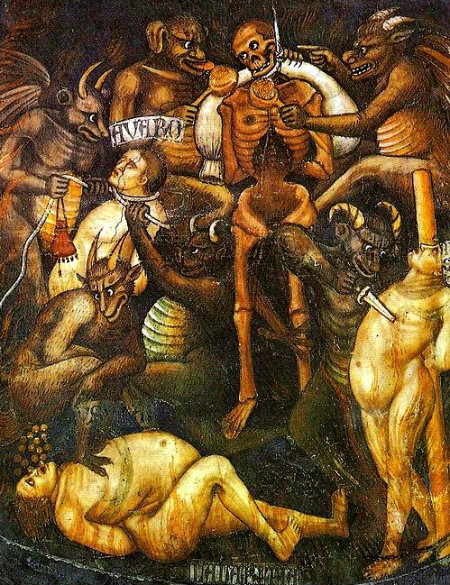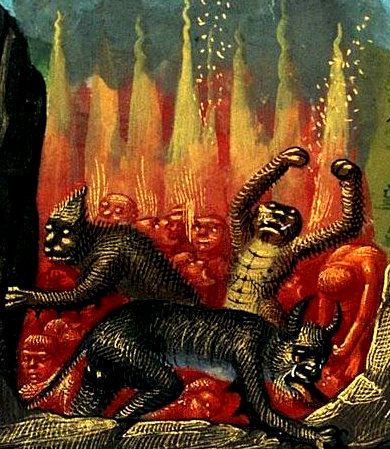Search:: Artists Alphabetically Artists by Country Artists by Century Artists by Movement
Medieval European Art Inspired by The Plague
A Galley of Paintings Inspired by the Plague in Medieval Europe Images of hell, death and the morbid produced during the Medieval era were highly influenced by the Black Death that swept across Europe during the mid 1300s.


Symptoms of the Plague
Symptoms include swelling of the lymph nodes, high fevers, large blackish pustules that soon burst and ooze a foul liquid, aching limbs, and vomiting of blood. Finally the victim became an unrecognizable, grotesque monster. The died by the millions, alone in agony, their kinsmen fleeing in terror. Government and Clergy tried to control the catastrophe, but the disease progressed relentlessly, eventually wiping out 80 million people. Preventing the Plague Many believed that the disease was spread upon the air, So, the survivors turned to incense, fragrant oils and perfumes to ward off the deadly vapors that they believed to be causing the infection. With so many bodies piling up, if nothing else the air smelled a bit better. Towns rang church bells and held parades where all the citizens paraded through the streets banging pots and pans to drive the plague away. Gypsies, Jews, foreign travelers, and lepers were hunted down and killed as they were believed to be the carriers of the disease. Medieval entrepreneurs made a fortune selling talismans, lucky charms and enchantments. Peasants who could not afford such luxuries simply wore a necklace of garlic around their necks or crushed herbs in their pockets. People were frantic for a remedy and would try anything, no matter how peculiar or bizarre.
A Medieval Song about the Plague
"A
sickly season," the merchant said,
"The town I left was filled with dead,
and everywhere these queer red flies
crawled upon the corpses' eyes,
eating them away."
"Fair make you sick," the merchant said,
"They crawled upon the wine and bread.
Pale priests with oil and books,
bulging eyes and crazy looks,
dropping like the flies."
"I had to laugh," the merchant said,
"The doctors purged, and dosed, and bled;
"And proved through solemn disputation
"The cause lay in some constellation.
"Then they began to die."
"First they sneezed," the merchant said,
"And then they turned the brightest red,
Begged for water, then fell back.
With bulging eyes and face turned black,
they waited for the flies."
"I
came away," the merchant said,
"You can't do business with the dead.
"So I've come here to ply my trade.
"You'll find this to be a fine brocade..."
And then he sneezed.
☼☼☼☼☼
Major
Medieval Painters
Hieronymus
Bosch
Coppo
di Marcovaldo
Pietro
Lorenzetti
Require more information about European Art Inspired by The Plague? Search Her
© HistoryofPainters.com If you like this page and wish to share it, you are welcome to link to it, with our thanks.